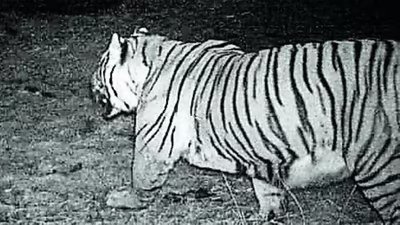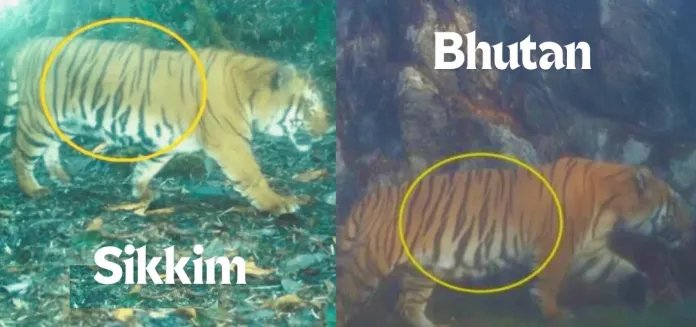Strap: It was the first time that a tiger has been spotted at an altitude of 3,640 metres
GANGTOK, Dec 10: A Royal Bengal Tiger was spotted in Pangalokha Wildlife Sanctuary in Sikkim at an altitude of 3,640 metre, officials said.
The Pangalokha Wildlife Sanctuary is located at the tri-junction of Sikkim, Bengal and Bhutan and is spread over 128 square kilometres. It is the largest wildlife sanctuary in Sikkim.
The Royal Bengal Tiger was captured by trap cameras of a team of Bombay Natural History Society (BNHS) which is conducting a study in the sanctuary in collaboration with the Sikkim Forest department, they said.
The BNHS team claimed that it was the first time that a tiger has been spotted at an altitude of 3,640 metres (11,942 feet).
“The tiger may be utilising the higher ranges of the sanctuary as a corridor to enter the forests of North Sikkim from Bhutan. Previous tiger sightings in the North Sikkim region indicate a potential connection between the adjoining Kyongnosla Alpine Sanctuary and Fambong Lho Wildlife Sanctuary.
“To gain a deeper understanding of tiger movement in the high-altitude region of the Sikkim Himalayas, further long-term intensive monitoring studies are deemed necessary,” said Atharva Singh, BNHS scientist associated with the survey.
The BNHS team was conducting a biodiversity assessment of the sanctuary as part of a project called “Conservation and Use of Five Wetlands in three Himalayan states to secure Habitats of Birds Migrating within the Central Asian Flyway (CAF).”
The project sanctioned by the Ministry of Environment, Forests and Climate Change of Government of India under the National Mission on Himalayan Studies (NMHS), aims to protect and conserve wetland sites in Ladakh, Himachal Pradesh, and Sikkim.
The Pangalokha Wildlife Sanctuary is located in East Sikkim district and connected to the forests of Bhutan and Neora Valley National Park in West Bengal. The sanctuary is home to a diverse range of species, including red pandas, snow leopards, Himalayan musk deer, Himalayan goral, and Himalayan black bears. (PTI)












